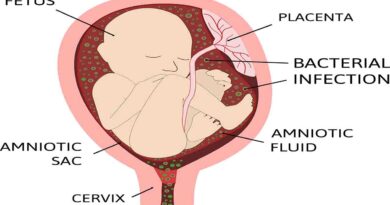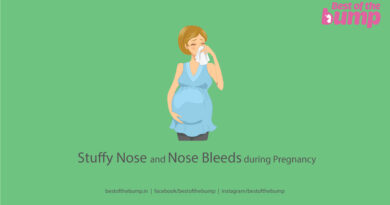How to avoid Pregnancy Naturally?
Learn how to avoid pregnancy naturally with safe and reliable methods. Explore natural contraception techniques, fertility awareness, and family planning tips for informed and effective choices in family planning and reproductive health.
Avoiding pregnancy naturally involves practicing natural methods of contraception or fertility awareness. Keep in mind that these methods are not as reliable as modern contraceptives like birth control pills, condoms, or intrauterine devices (IUDs). If you’re looking for reliable contraception, it’s best to consult with a healthcare provider. However, here are some natural methods that may help reduce the risk of pregnancy:
Calendar Method (Rhythm Method)
The Calendar Method, also known as the Rhythm Method, is a natural family planning technique that involves tracking your menstrual cycle to identify fertile and non-fertile days. Here’s how to use this method:
- Start Tracking: Begin by keeping a record of your menstrual cycles for several months to identify a pattern. Note the start and end dates of each period.
- Determine Your Fertile Window: Calculate your fertile window by finding the shortest and longest menstrual cycle lengths in your recorded data. Here’s how:
- Shortest Cycle: Subtract 18 days from the length of your shortest cycle.
- Longest Cycle: Subtract 11 days from the length of your longest cycle.
For example, if your shortest cycle is 26 days and your longest is 32 days:
- Shortest Cycle Calculation: 26 – 18 = Day 8
- Longest Cycle Calculation: 32 – 11 = Day 21
In this case, your fertile window would be from Day 8 to Day 21 of your menstrual cycle.
- Avoid Intercourse: During your fertile window, consider avoiding sexual intercourse or using backup contraception methods like condoms to reduce the risk of pregnancy.
- Continue Tracking: Keep tracking your cycles and adjust your fertile window calculations as needed based on your actual cycle lengths.
- Be Consistent: This method requires regular and accurate tracking, so consistency is essential for its effectiveness.
- Know the Limitations: Understand that the Calendar Method is less reliable than some other contraceptive methods, as cycle lengths can vary, and unexpected ovulation can occur.
It’s important to note that this method may not be suitable for individuals with irregular menstrual cycles or those who are just starting to menstruate. If you’re considering using the Calendar Method or any natural family planning technique, it’s a good idea to consult with a healthcare provider or a fertility awareness educator for guidance and support.
Basal Body Temperature (BBT) Method
The Basal Body Temperature (BBT) Method is a natural family planning technique that helps identify your fertile and non-fertile days by tracking changes in your basal body temperature. Here’s how to use this method:
- Start Tracking: Begin tracking your basal body temperature at the same time every morning before getting out of bed. Use a special basal body thermometer, which is more accurate for this purpose.
- Record Your Temperature: Record your temperature daily on a chart or a fertility tracking app. Be consistent with the time you take your temperature, as even slight variations in the time of day can affect the readings.
- Identify Temperature Shift: Your basal body temperature typically remains relatively stable during the first part of your menstrual cycle. However, after ovulation, there is a noticeable temperature increase due to hormonal changes. This shift usually ranges from 0.4 to 1.0 degrees Fahrenheit (0.2 to 0.5 degrees Celsius).
- Determine Fertile Days: To identify your fertile days, look for a sustained temperature increase over several days (usually at least three) compared to the previous days in your cycle. The day before the temperature rise is often considered the last day of fertility.
- Use Backup Contraception: To avoid pregnancy, you should abstain from unprotected intercourse or use backup contraception methods during your fertile days.
- Continue Tracking: Keep tracking your BBT throughout your menstrual cycle to detect patterns and predict ovulation in future cycles.
- Know the Limitations: The BBT method requires consistency and accuracy in temperature recording. It may not be as reliable for women with irregular sleep patterns or night shift work. Other factors like illness, stress, or alcohol consumption can also affect BBT readings.
- Combine Methods: Some people use the BBT method in conjunction with other natural family planning techniques, such as cervical mucus monitoring or the calendar method, for added accuracy.
As with any natural family planning method, it’s essential to receive proper instruction and guidance from a healthcare provider or a fertility awareness educator. They can help you interpret your BBT chart accurately and provide advice tailored to your individual circumstances.
Cervical Mucus Method
The Cervical Mucus Method, also known as the Billings Ovulation Method or cervical fluid method, is a natural family planning technique that relies on observing changes in cervical mucus to determine fertility. Here’s how to use this method:
- Start Observing: Begin observing your cervical mucus from the first day of your menstrual cycle. You can do this by checking your vaginal discharge daily.
- Record Your Observations: Keep a record of the changes in your cervical mucus on a chart or in a fertility tracking app. Note the color, texture, and consistency of your mucus each day.
- Learn the Patterns: As you progress through your menstrual cycle, you will notice specific patterns in your cervical mucus:
- Menstruation Phase: Typically, you will have little to no cervical mucus during your period.
- Dry Phase: After your period, you may experience a dry or sticky sensation with minimal mucus.
- Fertile Phase: As you approach ovulation, your cervical mucus will become more abundant, clear, slippery, and stretchy, similar to raw egg whites. This is your fertile mucus.
- Post-Ovulatory Phase: After ovulation, the mucus usually becomes thicker, cloudier, and less stretchy. This indicates the end of your fertile window.
- Determine Fertile Days: Your fertile days are the days when you observe the clear, slippery, and stretchy cervical mucus. These are the days you should avoid unprotected intercourse if you wish to prevent pregnancy.
- Use Backup Contraception: During your fertile days, it’s essential to abstain from intercourse or use backup contraception methods if you want to avoid pregnancy.
- Continue Tracking: Keep tracking your cervical mucus throughout your menstrual cycle to identify patterns and predict your fertile days in future cycles.
- Know the Limitations: The Cervical Mucus Method requires consistency and accuracy in observing and recording cervical mucus changes. It may not be as reliable for women with certain health conditions or those taking medications that affect cervical mucus.
- Combine Methods: Some individuals use the Cervical Mucus Method in conjunction with other natural family planning techniques, such as the Basal Body Temperature Method or the calendar method, for added accuracy.
Remember that proper instruction and guidance from a healthcare provider or a fertility awareness educator are crucial when using this method. They can help you interpret your cervical mucus observations accurately and provide personalized advice based on your unique circumstances.
Symptothermal Method
The Symptothermal Method is a highly effective natural family planning technique that combines multiple fertility signs for greater accuracy in determining fertile and non-fertile days. Here’s how to use the Symptothermal Method:
- Basal Body Temperature (BBT): Begin by tracking your basal body temperature every morning before getting out of bed. Use a basal body thermometer, which provides precise temperature readings. Your BBT typically rises slightly (around 0.5 to 1.0 degrees Fahrenheit) after ovulation due to the hormone progesterone. Record your daily temperature on a chart or in a fertility tracking app.
- Calendar Method: Track your menstrual cycle by noting the first day of each menstrual period. Over time, you’ll identify the average length of your menstrual cycles. The menstrual cycle typically lasts about 28 days, but it can vary from person to person. Use this information to estimate the likely timing of your ovulation.
- Cervical Mucus Method: Pay attention to changes in your cervical mucus. As you approach ovulation, your cervical mucus becomes more abundant, clear, slippery, and stretchy. Record these observations on your chart.
- Combine Observations: By combining the information from your BBT chart, menstrual cycle tracking, and cervical mucus observations, you can pinpoint your fertile and non-fertile days with greater accuracy. Typically, you are most fertile a few days before and after ovulation, which can be determined by the BBT shift and cervical mucus changes.
- Determine Fertile and Non-Fertile Days: Your fertile days are the days leading up to and including ovulation when the BBT shift occurs, and you observe fertile cervical mucus. During your fertile days, use contraception or abstain from unprotected intercourse if you wish to prevent pregnancy. Non-fertile days are when you are less likely to conceive.
- Use Backup Contraception: To avoid pregnancy, it’s crucial to use backup contraception methods during your fertile days.
- Continue Tracking: Maintain consistency in tracking your BBT, menstrual cycle, and cervical mucus throughout your menstrual cycles to refine your understanding of your unique fertility patterns.
- Seek Professional Guidance: For best results and to ensure you are correctly interpreting your fertility signs, consider consulting a healthcare provider or a fertility awareness educator who can provide guidance and address any questions or concerns.
The Symptothermal Method is highly effective when used correctly and consistently. However, it requires dedication and a thorough understanding of your body’s fertility signs. It can be a reliable natural family planning method for those who prefer non-hormonal contraception.
Breastfeeding
Exclusive breastfeeding can delay the return of fertility after childbirth due to a hormonal effect called lactational amenorrhea. However, it’s important to note that exclusive breastfeeding as a contraceptive method is not foolproof, and its effectiveness depends on several factors:
- Frequency and Consistency: Exclusive breastfeeding means feeding the baby only breast milk (no formula or solid foods), feeding on demand (usually every 2-3 hours), and allowing the baby to feed at night. If any of these conditions are not met, the effectiveness decreases.
- Postpartum Period: The effectiveness of breastfeeding as contraception is highest during the first six months postpartum. After this period, fertility may return even if breastfeeding continues.
- Menstruation: The return of menstruation is an indicator of fertility returning. Once a woman’s menstrual cycle resumes, she should consider using another contraceptive method if she wants to avoid pregnancy.
- Supplemental Feeding: If the baby is given supplemental feeds with formula or solid foods, the effectiveness of exclusive breastfeeding for contraception diminishes.
While breastfeeding can be a useful natural method for family planning in the short term, it’s not a reliable long-term contraceptive solution. If preventing pregnancy is a concern, it’s advisable to consult with a healthcare provider to choose a suitable contraception method.
Lactational Amenorrhea Method (LAM)
The Lactational Amenorrhea Method (LAM) is a natural family planning method that relies on the temporary infertility associated with exclusive breastfeeding. Here are some key points about LAM:
- Exclusive Breastfeeding: To use LAM effectively, you must breastfeed exclusively, meaning your baby relies solely on breast milk for nourishment. No other liquids or solids should be introduced.
- Frequency and Timing: Frequent and on-demand breastfeeding is crucial. Feeding should occur at least every 4 hours during the day and every 6 hours at night.
- Menstruation: LAM is considered effective until your menstrual periods return. Once your periods resume, your fertility may be returning, and it’s advisable to consider other contraceptive methods if you wish to avoid pregnancy.
- Time Limit: LAM is typically effective for the first six months postpartum. After this period, the reliability decreases.
It’s important to understand that LAM is most effective when all these conditions are met consistently. If any of the criteria are not followed, the risk of pregnancy increases. If you plan to rely on LAM as a contraceptive method, it’s a good idea to consult with a healthcare provider for guidance and to have a backup method in mind as your baby grows and feeding patterns change.
Barrier Methods
Barrier methods, such as the diaphragm, cervical cap, and spermicide, are not entirely natural but can be used as contraceptive options. Here’s some information on these methods:
- Diaphragm: A diaphragm is a dome-shaped device made of silicone or latex that is inserted into the vagina to cover the cervix before intercourse. It acts as a physical barrier, preventing sperm from reaching the egg. It must be used with a spermicide and should be fitted by a healthcare provider.
- Cervical Cap: Similar to the diaphragm, a cervical cap is a smaller, thimble-shaped device that covers the cervix. It also requires the use of spermicide. It needs to be fitted by a healthcare provider.
- Spermicide: Spermicides are chemical substances that immobilize or kill sperm. They can be used alone as a foam, gel, cream, or suppository, or in combination with barrier methods like the diaphragm or cervical cap.
These methods provide an additional layer of protection against pregnancy when used correctly and consistently. It’s important to follow the instructions provided with each method, and they are more effective when used in combination with other contraceptive methods.
Keep in mind that barrier methods do not protect against sexually transmitted infections (STIs). If you are at risk of STIs, it’s essential to use barrier methods in conjunction with condoms to reduce both pregnancy and STI risks. Always consult with a healthcare provider to determine the most suitable contraceptive method for your individual needs and circumstances.
Abstinence
Abstinence is indeed the most effective natural method for avoiding pregnancy. It involves abstaining from sexual intercourse altogether. This method carries no risk of pregnancy or side effects and is the only 100% effective way to prevent pregnancy. Abstinence is a viable choice for individuals who wish to avoid pregnancy and are not currently in a sexual relationship.
It’s essential to remember that abstinence is a personal choice, and individuals should make decisions about their sexual activity based on their own values, beliefs, and circumstances. If you choose to abstain from sexual intercourse but still want to engage in sexual activities, there are various ways to express intimacy and affection without the risk of pregnancy, such as through emotional connection, communication, and other non-penetrative activities.
If you are sexually active or planning to become sexually active in the future and wish to prevent pregnancy, it’s a good idea to discuss contraceptive options with a healthcare provider to find the method that best suits your needs and preferences.
Remember, these methods are less reliable than modern contraceptives, and there is still a risk of pregnancy. If you’re sexually active and want to avoid pregnancy, it’s advisable to consult with a healthcare provider to discuss more effective and reliable contraceptive options. They can help you choose the method that’s best suited to your needs and provide guidance on its proper use.
See This Also –




